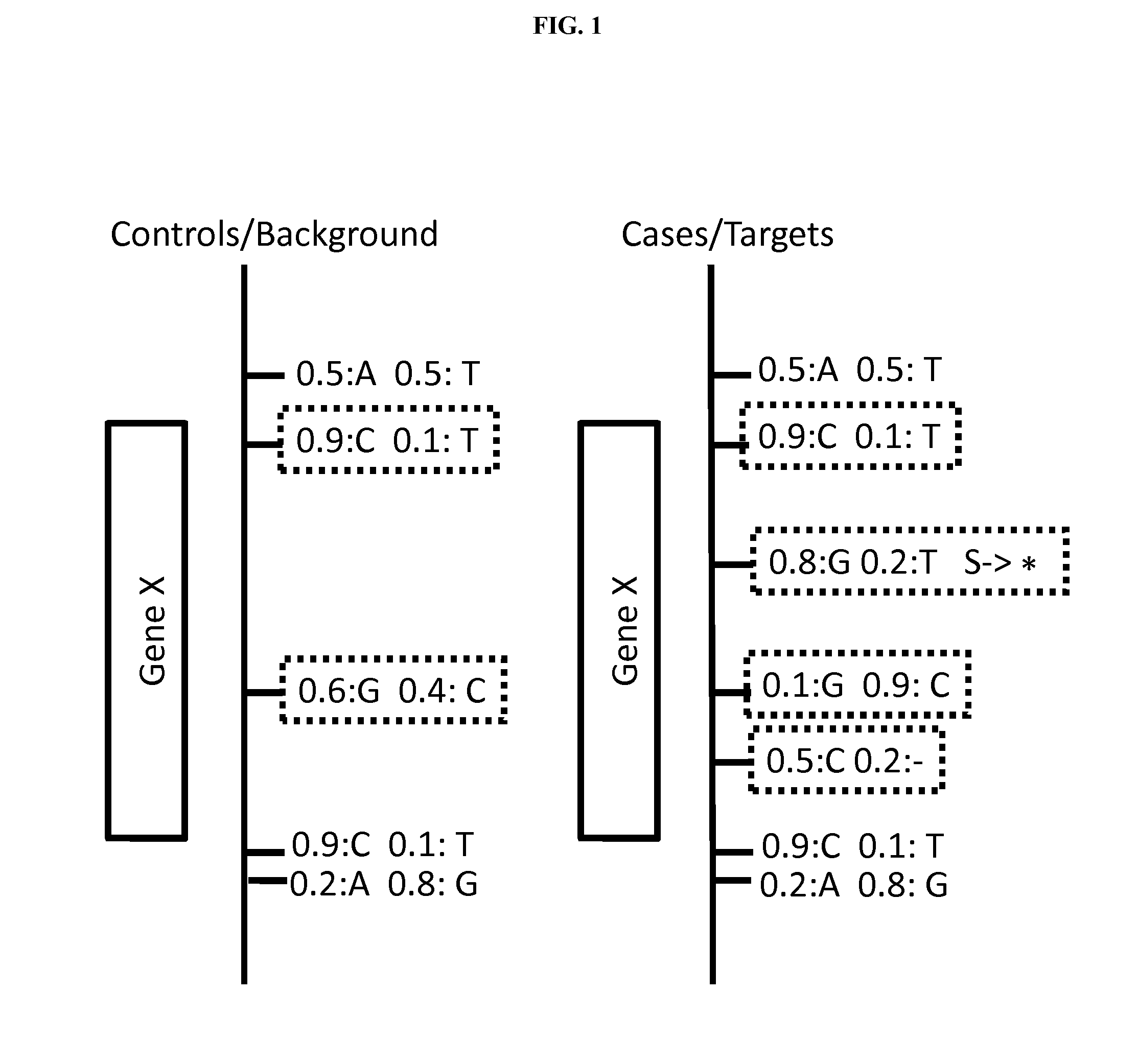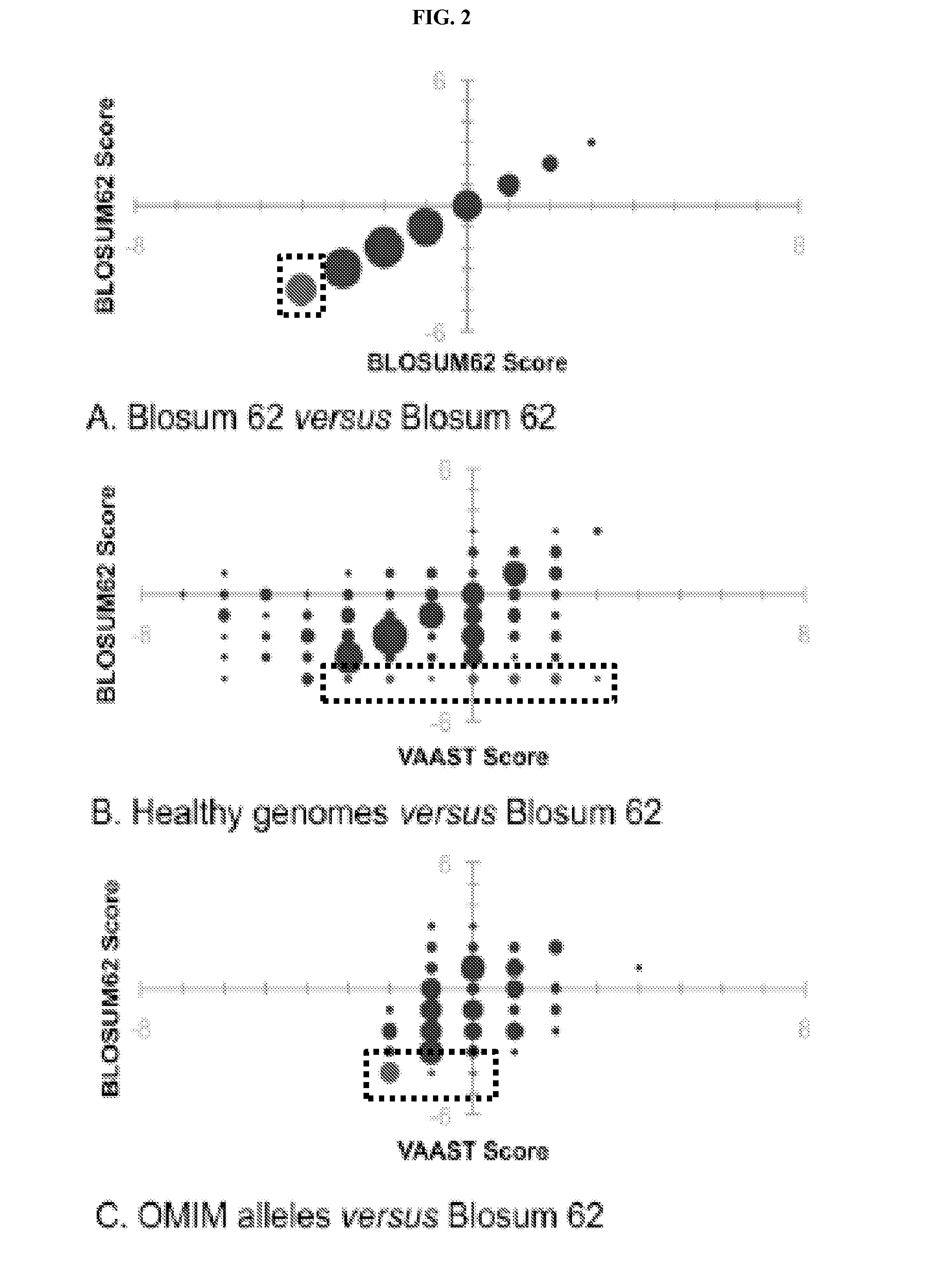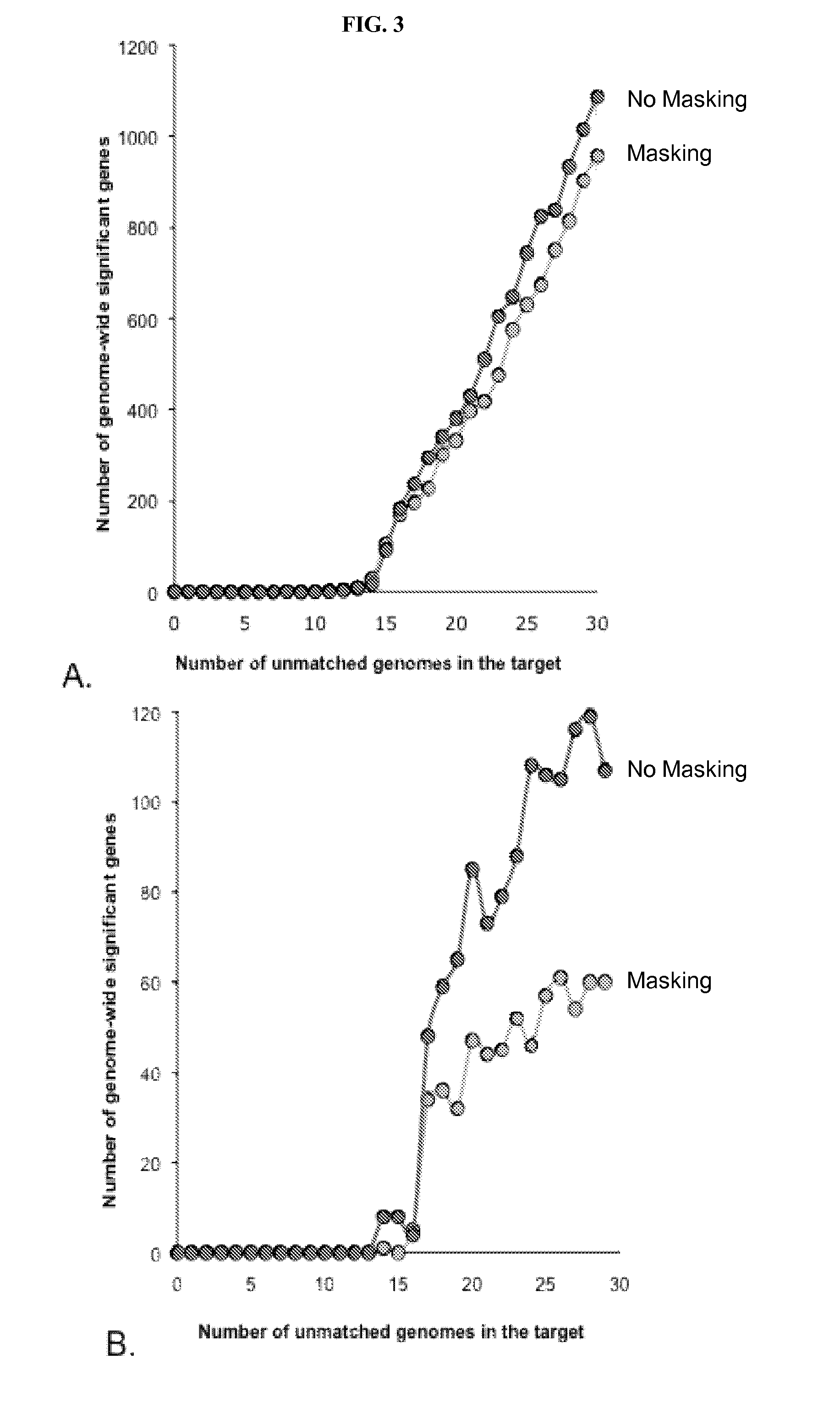Variant annotation, analysis and selection tool
a selection tool and variable technology, applied in the field of variable annotation, analysis and selection tools, can solve the problems of little software for the automated a critical analysis bottleneck, and a massive manual analysis of personal genome sequences
- Summary
- Abstract
- Description
- Claims
- Application Information
AI Technical Summary
Benefits of technology
Problems solved by technology
Method used
Image
Examples
example 1
Methods
[0133]Inputs and Outputs.
[0134]The VAAST search procedure is shown in FIG. 7. VAAST operates using two input files: a background and a target file. The background and target files contain the variants observed in control and case genomes, respectively. The same background file can be used again and again, obviating the need—and expense—of producing a new set of control data for each analysis. Background files prepared from whole-genome data can be used for whole-genome analyses, exome analyses and / or for individual gene analyses. These files can be in either VCF (www.1000genomes.org / wiki / Analysis / vcf4.0) or GVF (Reese et al., 2010, Genome Biol 11, R88) format. VAAST also comes with a series of premade and annotated background condenser files for the 1000 genomes (Consortium, 2010, Nature 467, 1061-1073) data and the 10Gen dataset (Reese et al., 2010, Genome Biol 11, R88). Also needed is a third file in GFF3 (www.sequenceontology.org / resources / gff3.html) containing genome feat...
example 2
VAAST Scores
[0162]VAAST combines variant frequency data with AAS (Amino Acid Substitution) effect information on a feature-by-feature basis (FIG. 1) using the likelihood ratio (A) shown in equations 1 and 2. Importantly, VAAST can make use of both coding and non-coding variants when doing so (see methods). The numerator and denominator in eq. 1 give the composite likelihoods of the observed genotypes for each feature under a healthy and disease model, respectively. For the healthy model, variant frequencies are drawn from the combined control (background) and case (target) genomes (pi in eq. 1); for the disease model variant frequencies are taken separately from the control genomes (piU in eq. 2) and the case genomes file (piA in eq. 1), respectively. Similarly, genome-wide Amino Acid Substitution (AAS) frequencies are derived using the control (background) genome sets for the healthy model; for the disease model these are based either upon the frequencies of different AAS observed ...
example 3
Comparison to AAS Approaches
[0164]Our approach to determining a variant's impact on gene function allows VAAST to score a wider spectrum of variants than existing AAS methods (Lausch et al., 2008, Am J Hum Genet; 83(5):649-55) (see Example 1, Eq. 2. for more details). SIFT (Kumar et al., 2009, Nat Protoc 4, 1073-1081), for example, examines non-synonymous changes in human proteins in the context of multiple alignments of homologous proteins from other organisms. Because not every human gene is conserved, and because conserved genes often contain un-conserved coding regions, an appreciable fraction of non-synonymous variants cannot be scored by this approach. For example, for the genomes shown in Table 2, about 10% of non-synonymous variants are not scored by SIFT due to a lack of conservation. VAAST, on the other hand, can score all non-synonymous variants. VAAST can also score synonymous variants and variants in non-coding regions of genes, which typically account for the great maj...
PUM
 Login to View More
Login to View More Abstract
Description
Claims
Application Information
 Login to View More
Login to View More - R&D
- Intellectual Property
- Life Sciences
- Materials
- Tech Scout
- Unparalleled Data Quality
- Higher Quality Content
- 60% Fewer Hallucinations
Browse by: Latest US Patents, China's latest patents, Technical Efficacy Thesaurus, Application Domain, Technology Topic, Popular Technical Reports.
© 2025 PatSnap. All rights reserved.Legal|Privacy policy|Modern Slavery Act Transparency Statement|Sitemap|About US| Contact US: help@patsnap.com



